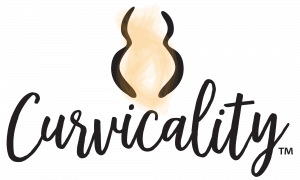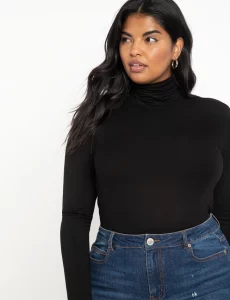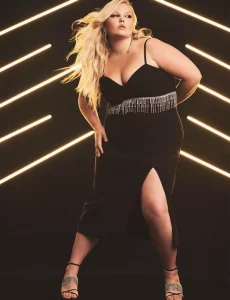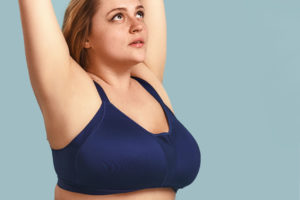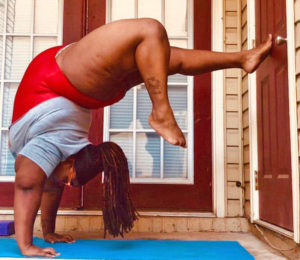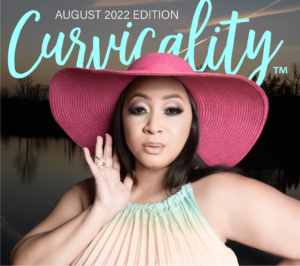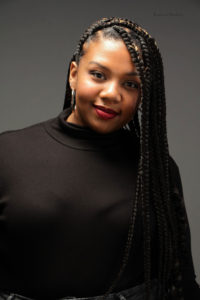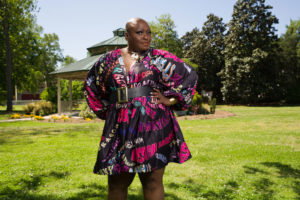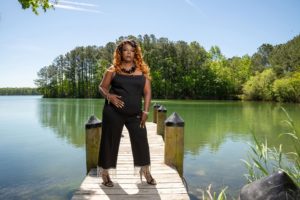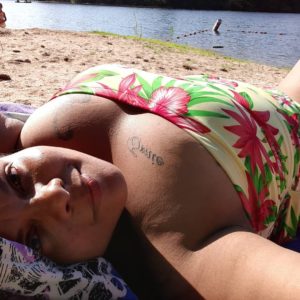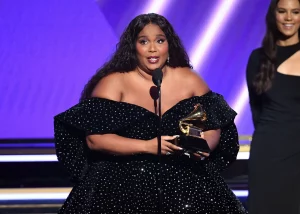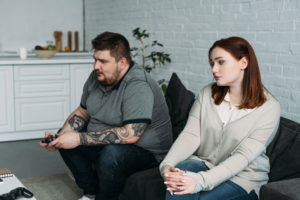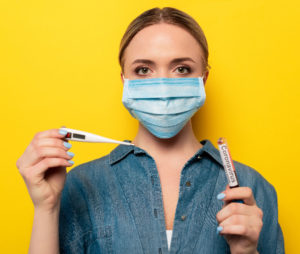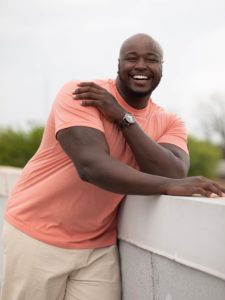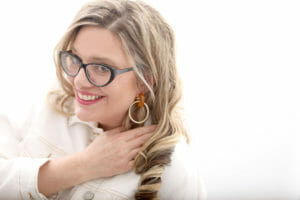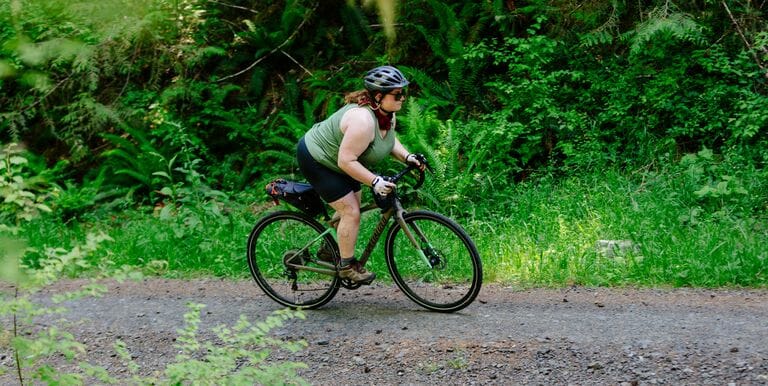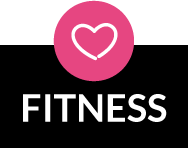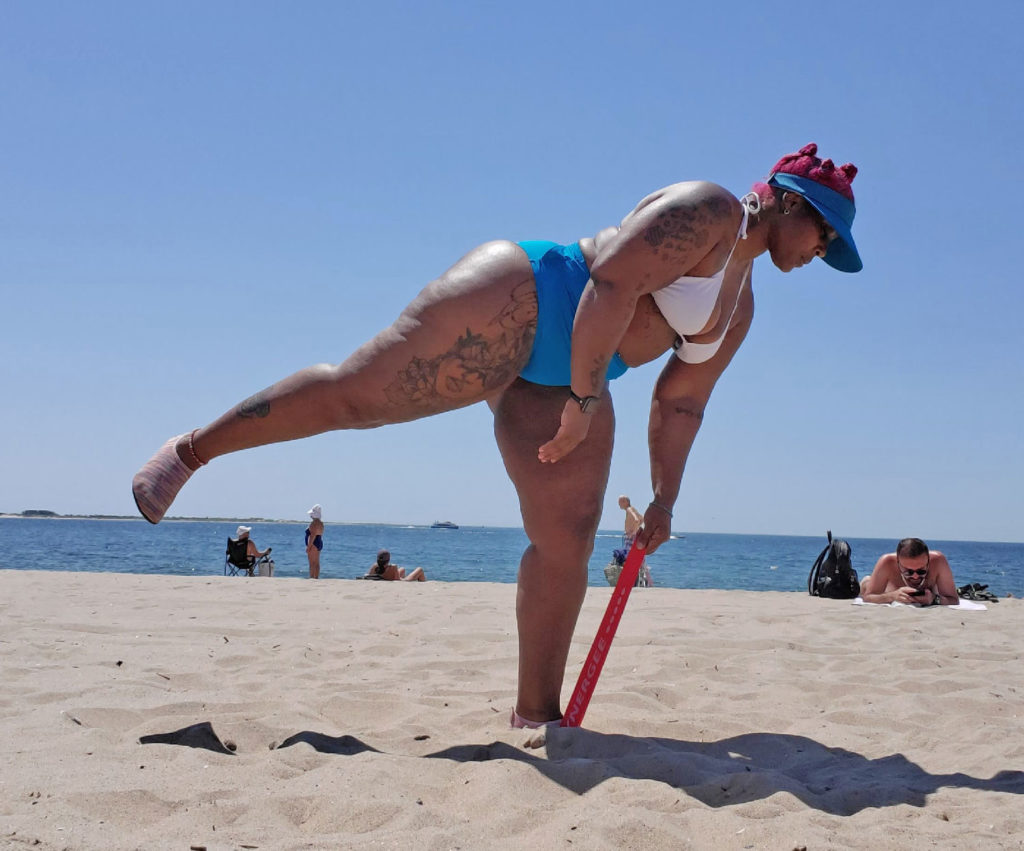Biker Kailey Kornhauser is making waves in the cycling world. She biked across Alaska, steadfast in her message that cycling is for everyone.
She learned this lesson the hard way. Today, she bikes to give her body the joy of movement, not to punish it for being too large. But getting to that point has been a journey. She went through a time when she saw physical movement as something she needed to force her body to do in order to try to make it smaller.
Biking wasn’t always complicated for Kornhauser. When she was a small child growing up in the Chicago suburbs, it was just a fun thing.
“I had a pink bike when I was a kid. It had little streamers off the ends of the handlebars. I had training wheels for a while. The first bike ride I went on with my parents was like a four-mile bike ride when I was 5. We went to a little deli and got a sandwich.”
Her first really long ride took place at age 15, when she rode from her town to Wisconsin and back.
“The whole day was 50 miles. I had never heard of anyone biking that far. That was wild, that someone would ride their bike that long. It was on a bike path. It definitely changed my view on biking, because I realized how far you could get. It reframed the issue for me, realizing you could go all the way, just using the power of your body.”
Body positivity and fat acceptance
As an adult, Kornhauser went back into biking believing it would help her lose weight
“I started biking because I couldn’t afford a car. Then, I thought, in the back of my head, ‘If I do this, I’ll lose weight and look like all the other cyclists.’ But that was not my reality.”
“I was still internalizing that my body was the result of eating too much and not moving enough. That was still my narrative inside my head. Even though I was eating the same kinds of foods that everyone around me who was biking was eating. Even though I was riding a lot of miles and lifting weights. I considered my body to be a negative thing.”
Over time, however, biking helped her realize that “larger bodies aren’t bad.”
“Fat does not equal bad. I think I’m still learning that every day. Biking is a big part of realizing that that isn’t true. And coming to terms with the fact that my bigger body is capable of so much. Just because it’s larger does not mean it’s not capable.”
Over time, she realized she didn’t have to lose weight to be able to identify as a biker.
“I moved to Oregon three years ago to pursue a Phd program, and at the same time, my dad got really sick. I’d tried diets. I think everyone in a larger body has tried diets.”
The pressure of her father’s illness and her studies got to her.
“I started going to the gym somewhat obsessively. I was eating like 500 calories a day and working out every day. It wasn’t that I wanted to go. It was punishment for what my body was. I was losing weight, I was getting smaller. It was the only time in my life I was able to get smaller.”
But she was frustrated by what she saw as insufficient progress.
“I went to a doctor and told him what I was doing. I just didn’t understand how, after six months of trying to do this, eating so little and exercising so much, how I could still have a larger body.”
Her doctor sent her to a nutritionist, and that turned out to be a turning point.
The nutritionist she saw believed in intuitive eating and in being healthy at every size. She told Kornhauser her body size was not the result of her movement and intake.
“I had to get to that point where I was harming myself, and realizing I’ve spent all this time hating my body. All this time I was on the bike, I wasn’t approaching it as a joyful way of moving my body, but as a punishment for my body being the way it is.” So the intervention was helpful.
“Once you realize your body is not a punishment for your behavior, you look at how you treat people with larger bodies,” Kornhauser says.
“Fat activism and body positivity both have a role to play.” They are different. Body positivity is internal work. It’s about learning to love yourself at any size. Fat acceptance is external work. It’s about changing the way society relates to larger bodies.
“I like to think I have changed some people’s perceptions. I’ve definitely changed my own perceptions.”
She’s happy when she inspires others in larger bodies to take up or resume biking.
“People message me to say they thought biking wasn’t for them, because they were larger now.”
But What About Butt Pain?
“I don’t know how you avoid the butthurt. You get used to the butthurt. And finding the right bike shorts is key.
“A lot of the major brands go to XX, but very few go above that,” she says. Larger-bodied bikers are an underserved community. But she has some suggestions for that.
“You can just buy the padded part and sew them into bike shorts you like,” she says. That allows you to customize them. “Sometimes, you need the padding to go further up on your butt than the biking shorts have it. You can buy the padding separately.”
“I carry a lot of weight in the center of my body.” That means sometimes the shorts are hitting her in a place where she doesn’t want it, so she customizes.
The saddle is key, too: “The one thing that I think is a misconception is that people with larger bodies think they need wider or cushier saddles. The saddle should be fitted to you based on where your sit bones are. Just because your body is bigger, that does not mean your sit bones are farther apart.”
A good bike shop is an invaluable resource, she said. Someone there will be able to recommend the right saddle for you.
“The wider saddles are going to cause way more butt chafing. Pro bikers never have (wide saddles) and it’s not because they’re thinner. It’s because they hurt us,” she says.
Painful lady bits are another reality female bicyclists may face. Kornhauser recommends adjusting the saddle to be less tilted. Experiment with a model featuring a cut-out design. “There are a lot of adjustments that can be made.” And a good application of Chub Rub is helpful to fight chafing.
Hands and wrists can also hurt after long rides. “A lot of people put a lot of weight on their hands and wrists. Butt pain and hand pain is what stops them. You can make it a lot better by making adjustments to your bike.”
That’s another reason for finding a good bike shop. Seek out a female bike shop employee if you feel more comfortable that way. “Also, there are a lot of YouTube videos. It’s not that complicated. I’m not very mechanically oriented, and I’m still able to watch a video and usually figure it out.”
False health concerns
There are always people who refuse to accept that a woman with a fat body can also be a serious bicyclist. And such people have found a new way to criticize people with larger bodies.
“The false concern about my health,” Kornhauser says. “That type of comment I find way more often than any other kind of comment. People who make those comments are not genuinely concerned about my health. It’s how they make a fat-phobic comment in a way that doesn’t cross the line in society.”
“Especially in biking, thinner people doing the same activity as you will often shout out a compliment to you. They yell, ‘Good for you!’ Think about why you’re making the comment or the compliment. Is it coming from a place of wanting to point out their body size? I think the compliments are a bit back-handed. Do you say way to go to everyone biking, or just to the people in bigger bodies?”
The Alaska Ride
Kornhauser and a friend rode 1,000 miles from Seward to Deadhorse in Alaska. “The first 500 miles were paved. That part was a really fun ride.”
Then they hit gravel for the second 500 miles. “And that was a totally different experience.”
“You’re up in the wilderness. The whole trip, we were carrying our sleeping bags. But for that part of the ride, we had to carry all our food. It was really, really hard.”
It took about five weeks to do the whole thing, but they took a lot of breaks to conduct interviews for a project.
During the second half of the ride, a tour guide came by their campsite and asked them where they were going. About 100 people tried to do that trail that year, and many did not finish. The guide told them he’d just seen two “very athletic” men barely finish.
“He said, ‘very athletic’ and looked right at me.” She knew he meant “thin men” and wishes she could have informed the guide that they did indeed finish their ride.
But they later met a bunch of female riders who were “so psyched” to see women doing the ride and shared treats with them. ”We don’t really have real food the whole time. So whenever people pull over to share, we’re really appreciative.”
Bucket List Rides
Kornhauser has a long list of rides she’d like to complete. The Oregon Timber Trail goes across the cascades. “I’m going to do at least half of it this summer,” she says. “The Great Divide” goes from Banff, Canada, through the U.S. and ends at the Mexican border. “That’s like 2,700 miles, so it would take longer. I need a few months for that one.
“I have so many rides I would love to do. Lately, I’ve been trying to stay in the Pacific Northwest and do rides here. Right now I’m trying to do one-night rides. Some of these rides are so intimidating or you need to have so much time off work to do them.” She is still in her PhD program (Forest Ecosystems in Society) and has a flexible schedule, but she knows most don’t. So she encourages rides that can be done on a weekend.
She does limited public speaking. She was recently scheduled to do some speaking in Washington, D.C. and in New York City, but all the talks were canceled because of the coronavirus.
What About Weight?
“Bikes can have weight limits,” Kornhauser points out. “Sometimes, they’re quite limiting. The bike shop would know, or you can look it up and find the structural weight limit. You can find it in the user manual.”
Bikes are made out of different materials. Steel bikes often have no weight limit or a very high weight limit. Carbon has the lowest weight limit.
“Also, the wheels have their own weight limit.” Look at the number of spokes and the material they’re made of. A lot of steel spokes is better. “You might be able to push that weight limit a little bit, but if you push it too far, you’re going to have problems. You can find bikes that will hold you.”
Again, Kornhauser says, ask the people at a good bike shop to help you. “They may be wary for fear of offending you. So bring it up.”
Another consideration for bikers with larger bodies and the components. “Bikes have a lot of components that can be worn down if carrying more weight,” she says. Brakes are an example. “You may have to change your brake pads out more often than a person in a smaller body.”
With the right bike, safety equipment and clothing, there is no reason anybody of any size cannot ride. Do it for the joy of riding.
Resources:
Kornhauser recommends:
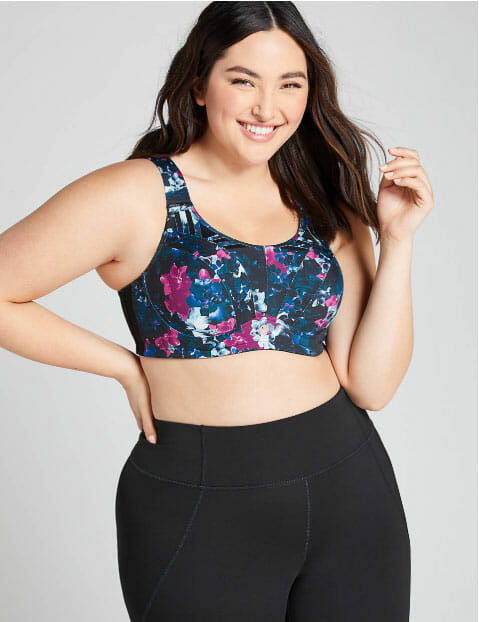

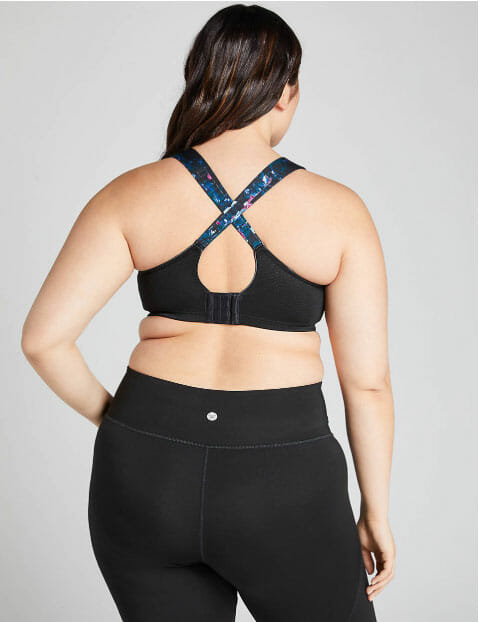
Terry, a woman-owned company whose biking apparel goes to 3X.
Pearl iZUMi, which offers up to size 3X.
Shredly: “They worked with bikers in larger bodies to make their shorts. They go up to size 24 and are pretty true to size.”
Rsport: She hasn’t tried them, but they are the most size inclusive company and go to size 6X.

